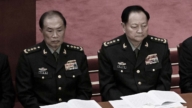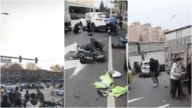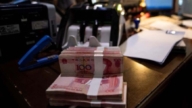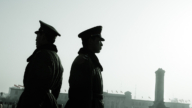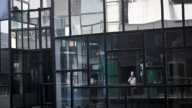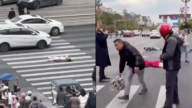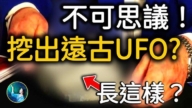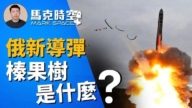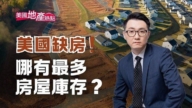【新唐人2012年2月8日讯】2012年中国面临经济增长放缓、通货膨胀高升、群体性抗议和社会动荡蔓延等问题,中共为了保证今年下半年的十八大领导班子换届顺利,在全国各地都加强了警戒。国际媒体指出,中共当局一些最新的举措,暴露出了尽管全国警力不断扩充,仍然难以应付动荡局面。
英国《金融时报》 报导,尽管中共持续施行高压手段,让公安部门措手不及的群体性事件却一再发生。近期在四川藏区,警方开枪打死了多名藏族抗议者。西藏自治区强化了警方戒严措施,而新疆自治区上周宣布新招收8000名警察。
尽管中共维稳开支急剧增长,并已超过了国防预算,但用于各地维稳的警力仍不够使用。过去30年里,当局公布的犯罪率和抗争事件的增长远快于公安队伍的增长。1978年全国有68万名警务人员,2003年仅增长到86.3万名。但在过去10年,全国警察人数猛增。
广东省人文学会副会长信力建最近发表文章指出,从1993年到2003年,全国群体性事件由1万起增加到6万起,参与民众由73万增加到307万。从2003年到05年,全国共发生群体性事件20万起,参与民众高达1000多万。2010年,全国发生的抗议和骚乱事件猛增到18万起。
“中国民主党”全委会美东执委张健表示,中共越是高压维稳,社会反而越不稳。
张健:“在去年我们知道中国产生的大小维权抗暴事件一共高达26万起,中国的维稳经费已经创造了历史的最高水平,而且也遭受到海内外舆论的一致谴责。我相信随着中国民间和官方的矛盾日益加剧对立产生的激化,你最多的军队也可能难以去维稳。”
据中共媒体报导,去年全国警察人数约为200万名,平均每10万人中有150名警察,仍比联合国2005年公布的世界平均数少一半。
中共总书记胡锦涛去年提出了“创新社会管理”的口号,要求治安人员和地方官员通过在社区更积极的早期调解、在基层开展更有力的信息收集,来预防冲突的发生。
北京维权律师莫少平表示,中国官民矛盾最根本的原因是一党专制、党大于法。
莫少平:“群体性事件从宏观上来讲是各种的公民合法权益受到侵害:公民财产这方面,例如拆迁补偿、土地被占用、房屋被补偿等等﹔然后司法不公方面﹔还有一些公民的政治权力方面,比如选举的这方面,也有一些突发性的事件﹔再有就是民族矛盾这方面。从大的矛盾它还表现在于贫富差距比较大,就是说基尼系数越来越大。”
根据联合国数据,2011年中国的基尼系数突破0.55,成为世界上贫富差距最大的国家之一。基尼系数超过0.4是贫富两极分化引起社会动荡的警戒线。
《金融时报》指出,中共维稳警力受到地区差距和制度缺陷的严重困扰。全国各地共有70多万名武警,在西藏和新疆部署的武警部队数量巨大,但仍不够使用。而上海2008年的人均执法支出是新疆的两倍。
中共治安机构还有另一个致命弱点:由于正规警察不够使用,作为补充的其他治安系统更为庞大,包括活动隐蔽、主要负责监控异见人士的国安系统、负责街道秩序的城管系统,这些城管因殴打小摊贩而臭名昭著。
外媒报导指出,中共很大一部分治安工作是由非正规队伍在执行,还包括遍布基层的党团政工组织,他们没有受过什么法律培训,同时也在加剧官民矛盾对立。随着十八大临近,中共越来越难以应付日益增长的群体性抗议和社会动荡。
新唐人记者刘惠、李元翰、萧宇采访报导。
CCP Short Of Police for Mass Protests
China faces slow economic growth, soaring inflation,
mass protest outbreaks and spread of social unrest in 2012.
The Chinese Communist Party (CCP) stepped up
its vigilance across China.
At the incoming 18th congress, the current political
leadership will hand over its power.
Foreign media point out, CCP’s recent moves indicate its
growing police force isn’t enough to deal with social unrests.
Under CCP’s high-handed repressions, China’s unexpected
mass protests continue to grow, Financial Times reported.
CCP police recently killed several Tibetan protesters
in Sichuan.
The martial law was officially strengthened
in the Tibet Autonomous Region.
Last week in Xinjiang, the local CCP authorities declared
to recruit 8,000 extra policemen.
The CCP’s internal security spending keeps growing,
exceeding the defense budget.
However, the police force for maintaining stability
across China still see shortage.
Over the past 30 years, official data shows figures of crime
and mass protests grow much faster than that of police force.
In 1978, China had 0.68 million policemen,
in 2003, the figure is over 0.86 million.
Still yet, over the past 10 years,
the police force numbers shot up in China.
Xin Lijian, Vice President of Guangdong Humanities Society,
recently listed figures of China’s mass protests in an article.
In 1993-2003, the figure peaked at 60,000, from 10,000.
Participants reached 3.07 million from 0.73 million.
In 2003-2005, a total of 0.2 million mass protests occurred.
Over 10 million people joined protests.
In 2010 alone, China’s mass protest cases
went up to 0.18 million.
Zhang Jian, US-East executive committee member
of Democracy Party of China, reviews the issue.
The harsher the CCP’s maintenance of stability gets,
the more unstable the society becomes, says Zhang.
Zhang Jian: “As far as we know China’s mass protests
rose to 0.26 million in 2011.
China’s internal security spending hit a historical new record.
This has incited public criticism both in China and abroad.
As frictions between civil society and the regime intensify,
no amount of army will be enough to safeguard stability.”
The CCP official media said that the police force in 2011
was about 2 million.
That is an average of 150 policemen per 0.10 million people.
The figure is less than half of the world average figure the UN announced in 2005.
CCP President Hu Jintao put forward a slogan
of “innovative social management" in 2011.
Hu required the security personnel and localized officials
to prevent outbreak of mass protests.
Hu offered means like more active communities mediations
and more effective grass-root information-gathering.
Beijing-based rights lawyer, Mo Shaoping,
analyzes China’s officials-civilians clash.
The essential reason of it is the one-party dictatorship,
and the CCP standing above the law.
Mo Shaoping: “In terms of macro-economy, mass protest
refers to the infringement of various civic legitimate rights:
– on civic properties, like demolition & eviction compensation,
occupation of farmlands, house compensation, etc.;
– on judicial injustice; – on conflicts between ethnic groups;
– on citizens’ political rights, i.e. elections, unexpected events.
A large clash also shows up as the gap widens between
rich and poor, i.e. the Gini coefficient is getting bigger."
UN’s data shows that China’s Gini coefficient exceeded 0.55
in 2011, as one of the nations with the highest wealth gap.
Gini coefficient of 0.4 is the warning level, indicating
a potential social unrest due to wealth polarization.
Financial Times revealed, CCP’s police force for stability
security is harried by regional gaps and system flaws.
Over 70 million armed policemen are located across China.
In Tibet and Xinjiang alone, the number of armed police
is huge, but it is still not enough.
Yet in 2008, Shanghai’s per-capita spending
on law enforcement was twice that for Xinjiang.
The CCP security system has another serious weakness:
Regular police aren’t enough, so its complementary security system is much larger.
The complementary system includes state security police,
secretly monitoring dissidents, and chengguan (the city urban management agency.)
The chengguan are notorious
for assaulting small street vendors.
According to the foreign media, a great part of CCP’s
public security forces are non-formal teams.
These teams even include CCP political work organs
at a grass-root level.
Media claim, having had little training of the law,
these grass roots teams are intensifying civic-official frictions.
As its18th congress nears, the CCP faces increasing
difficulties to tackle ongoing mass protests and social unrests.
NTD reporters Liu Hui, Li Yuanhan and Xiao Yu






